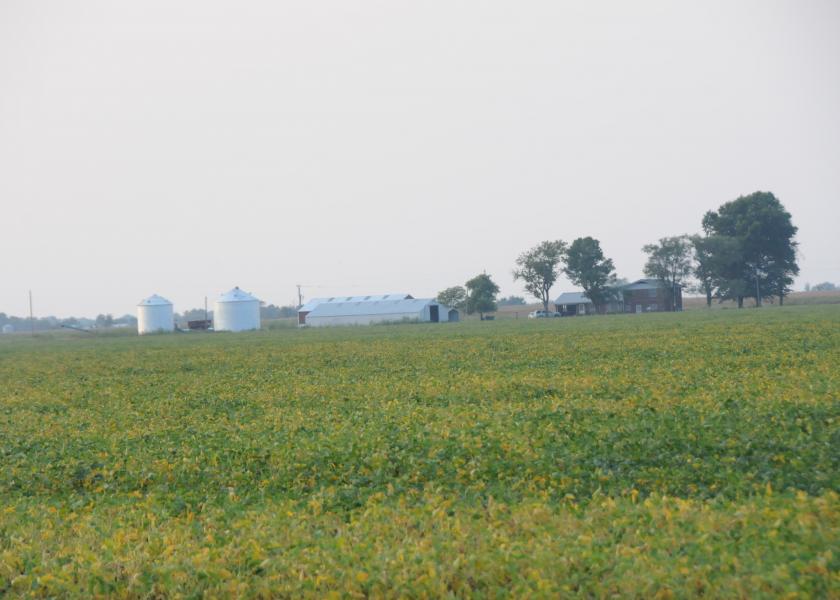Scout For These 4 Yield-Robbing Soybean Ailments

As seed hits the soil and cold temperatures linger, farmers might be wondering what this means for seed emergence. Soybeans are already fighting an uphill battle with less-than-perfect seed quality and adding cool soils to the mix means farmers need to actively scout fields.
The first 48 hours of a seed’s life are the most critical—it can make or break your entire season. In that time, the seed needs to absorb water and it’s important the soil hits 50 degrees to help the seed grow and develop.
Burrus Seed agronomists suggest checking fields for four specific potential injuries: phytophthora root rot, herbicide injury, Pythium seedling blight and sudden death syndrome.
Phytophthora Root Rot
Fields with wet, warm soil temperatures are at a higher risk of phytophthora root rot. The disease can impact soybean plants from seedlings to harvest. It’s especially harmful early in the season. Soybean varieties can have genetic resistance and there are some seed treatments available for farmers.
Scout for phytophthora from May to August. Its appearance is similar to early seed rots and seedling blights. It can also lead to wilting, leaf yellowing and premature plant death. Sometimes infected plants have black lower stems and decayed roots.
Herbicide Injury
When soybeans emerge, they can show symptoms of herbicide injury, especially during cool temperatures.
“Injury can occur when seedlings emerge with a PPO herbicide applied to the soil,” Chris Brown, Burrus agronomist said in a recent news release. “Soil particles containing herbicide splashing on crop leaves after a heavy rain can also cause plant death and necrotic spots on the leaf… Herbicide injury is more common in sandy soils with lower organic matter than it is soils higher organic matter.”
Pythium Seedling Blight
Seedlings with Pythium dampen off either before or after emergence in cool, wet soils. Scout from late April to August for this seedling blight. In fields with a history of this disease consider using a fungicide treatment when conditions favor Pythium.
Soybeans with Pythium seedling blight can grow poorly and turn yellow and die, in fact, the seeds can even rot in the ground. If those symptoms haven’t appeared digging can show a dark and decayed primary root and hypocotyl—which looks like a sunken, red legion on the hypocotyl near the soil line.
Sudden Death Syndrome (SDS)
Generally speaking, SDS symptoms don’t appear until late in the season. The fungus, however, infects the plant early in the season. The pathogen infects soybeans in cool, wet conditions but seed treatments and genetic resistance can help fight it off.
SDS is caused by fusarium virguliforme and you scout for the disease from June to mid-August. It’s an important early-season pest because if you get it in the early season, and later season conditions favor its development it can reduce yields. Early season cool, wet weather encourages the infection to grow and wet conditions at flowing followed by warm, dry weather favor symptom expression.







